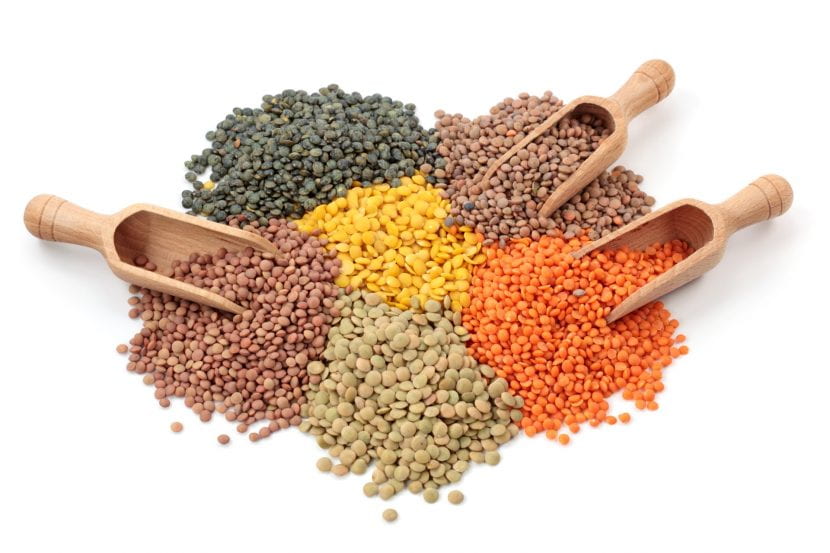Vegetarian and vegan diets have become the popular dietary trend in recent years. However, you don’t necessarily have to be a vegetarian or vegan to enjoy delicious plant-based meals. Plant based meals can improve your health and the environment. Today, we are going to talk about lentils which are a great source of protein and are sometimes used as a meat alternative in vegetarian and vegan recipes. Unlike beans, lentils don’t require pre-soaking as they cook quickly. With their earthy and nutty flavors, lentils work well in different recipes.
Lentils are a type of legume rich in many important nutrients including protein, fiber, folate, iron, and potassium. They are also low in sodium.
Types of Lentils
There are a variety of lentils you can find in a grocery store, including different shapes and colors. You might find brown, green, black, red, yellow, and orange lentils in the supermarket. They can also be sold as whole or split lentils. The main difference between whole and split lentils is the presence of husk. Split lentils without husks cook quickly and will not retain their shape like the whole lentils. Lentils might also be available as dried or canned.
| Brown Lentils |
It is one of the most common types of lentils with a mild flavor and can hold their shape well during cooking. | |
| Green Lentils |
Similar to brown lentils, green lentils also hold shape well during cooking but they also have a more robust flavor. | |
|
Black Lentils (Beluga Lentils) |
Black lentils are small, shiny, and have a firm texture when cooked. | |
|
Red or Yellow Lentils |
Red or yellow lentils are sold only as split lentils. As a result, they cook quickly and get soft easily. Additionally, they have a sweet and nutty flavor. |
Storage
- Packaged lentils (dry or canned) can be kept in a dry, dark, and cool location for up to one year.
- If the package is opened, you can put lentils in airtight containers and store for up to one year.
Basic Cooking Tips
- Before cooking, rinse and sift through lentils to remove stones or debris.
- Use 2 – 3 parts liquid to 1 part dry lentils, bring it to a boil and reduce heat to simmer, cook until tender.
- Cooked lentils should be soft and tender instead of crunchy.
- It takes about 20-30 minutes for whole lentils (typically brown and black) to cook.
- It takes about 10-15 minutes for split lentils (typically red, yellow, orange) to cook.
- Cook time might vary slightly depending on the variety of lentils.
- Timing can also be adjusted based on the desired texture. Increase the cooking time if a softer texture is desired.
- Use canned lentils in recipes to save time as they are pre-cooked. Remember to rinse well to reduce sodium content.
Serving Tips
- Eat them as stand-alone sides or add them to salads or cooked whole grains.
- Add to a soup or stew to make it thicker and heartier.
- Use as a meat alternative in recipes by reducing the amount of meat mixture in fillings.
How likely are you to try lentils?
What is your favourite way of eating lentils? Let us know by commenting below.

